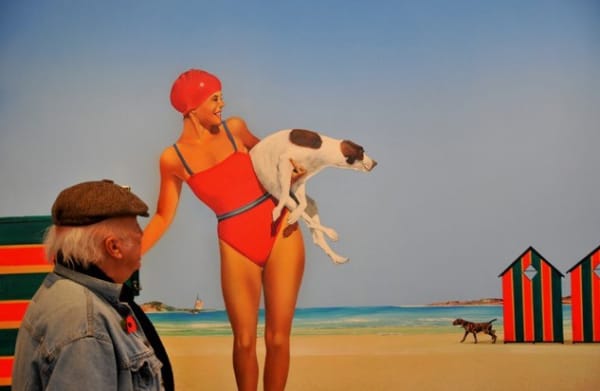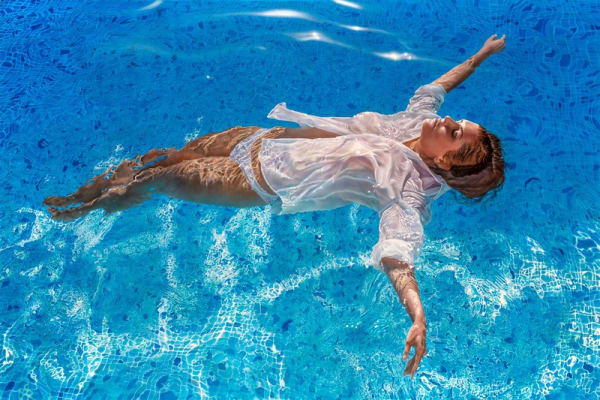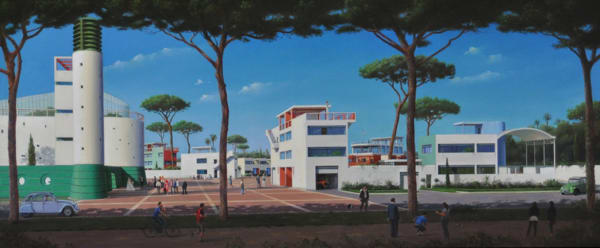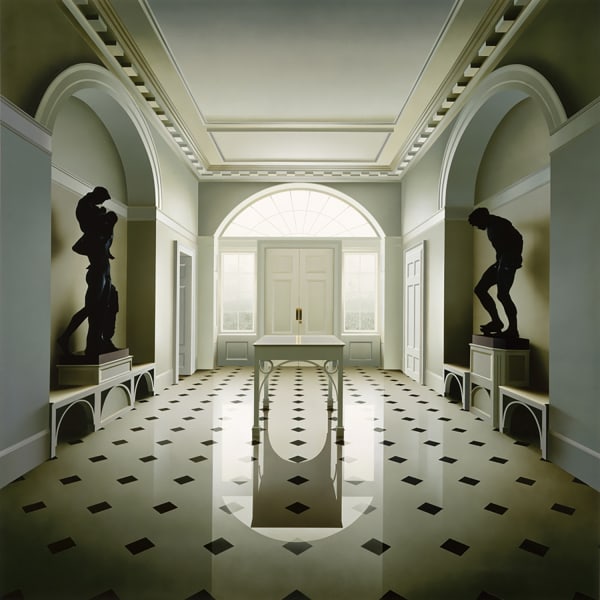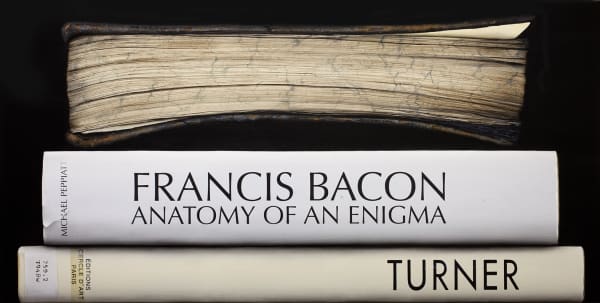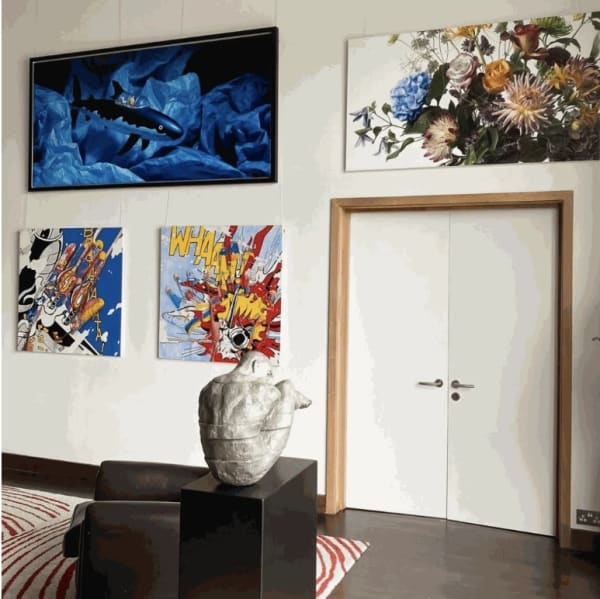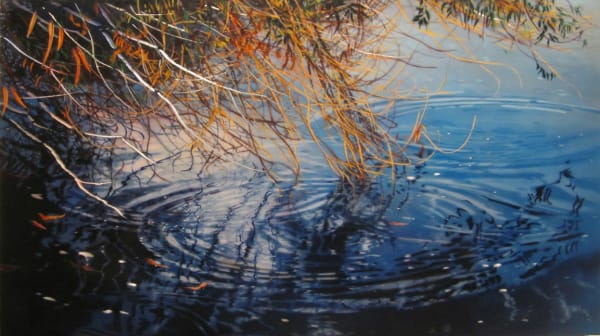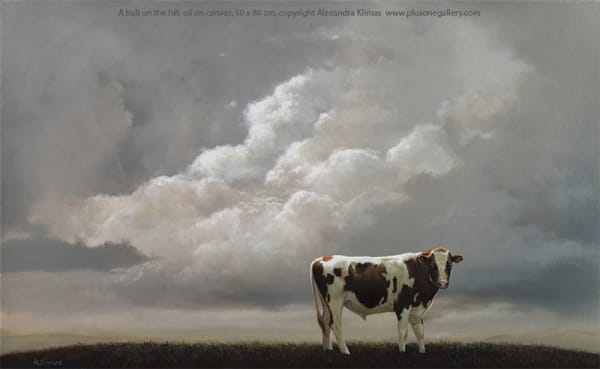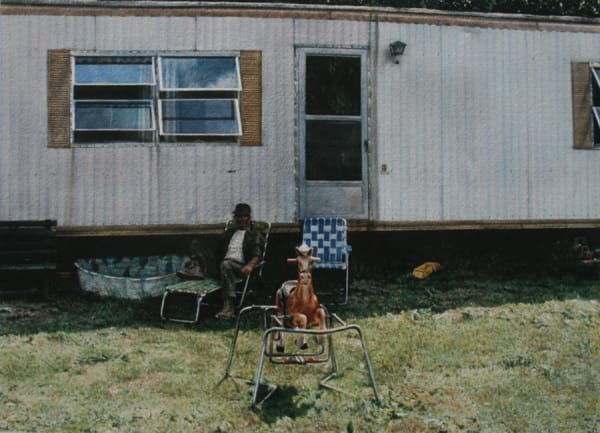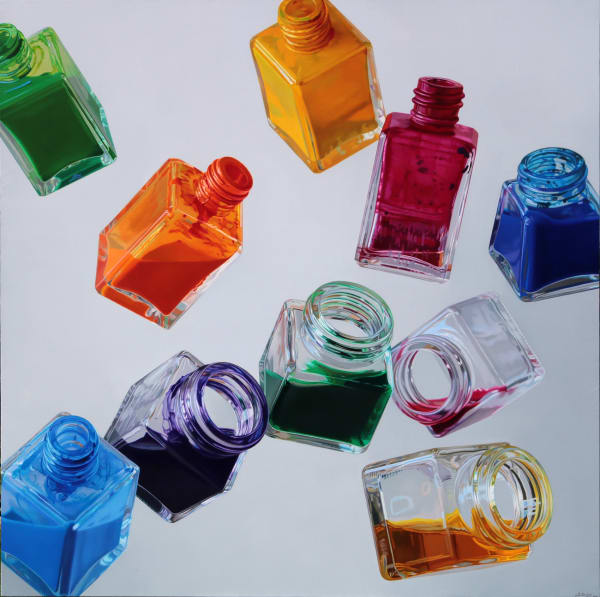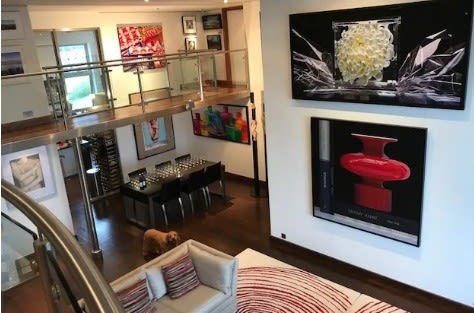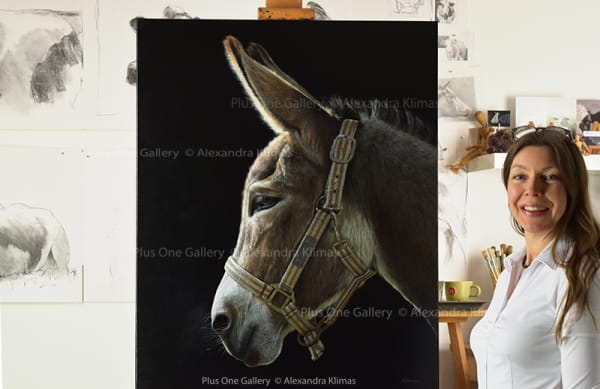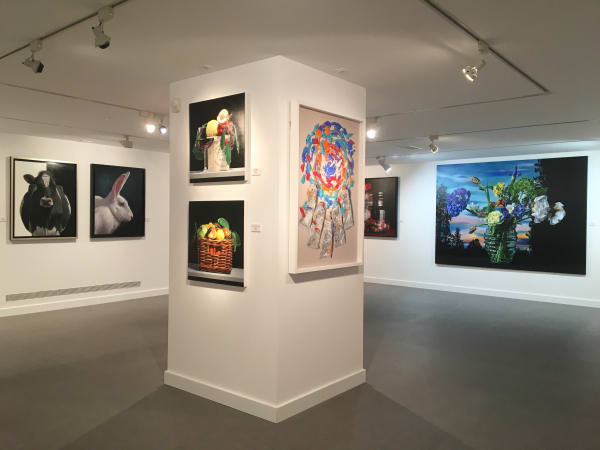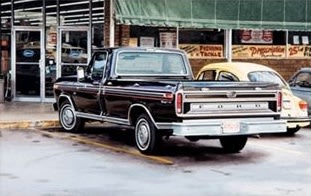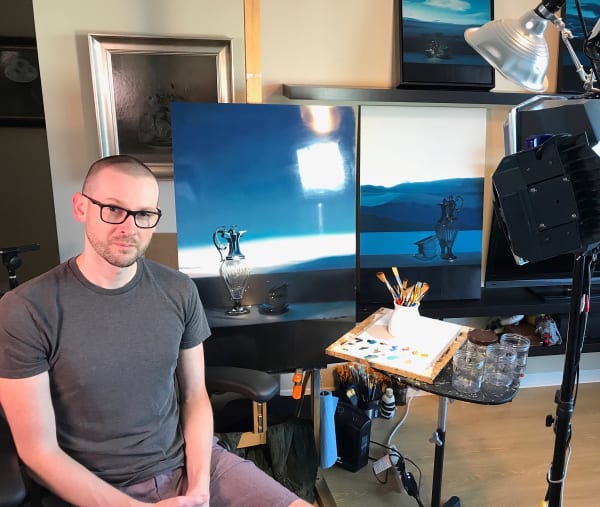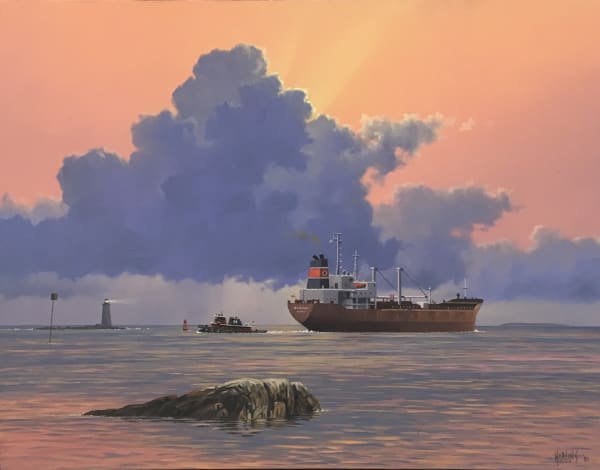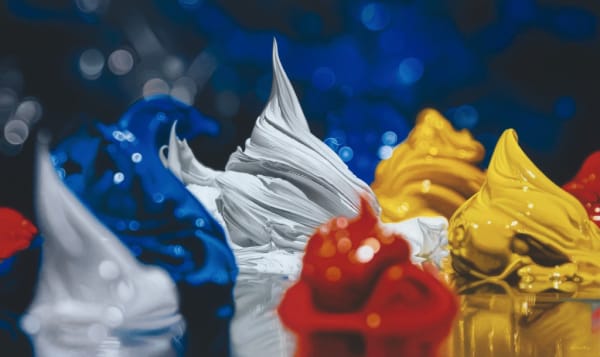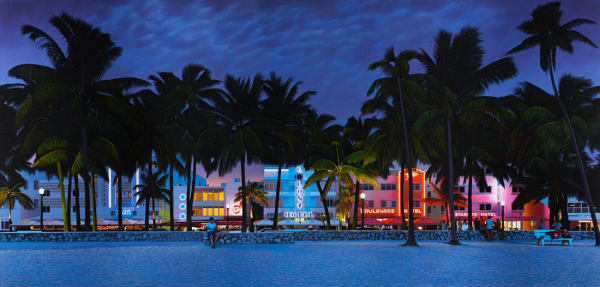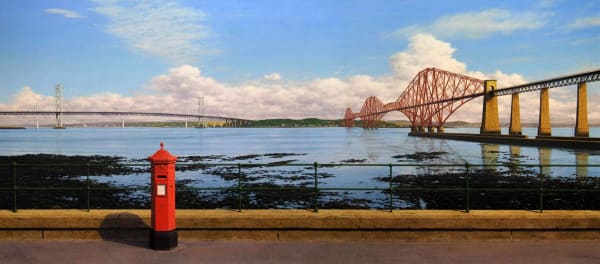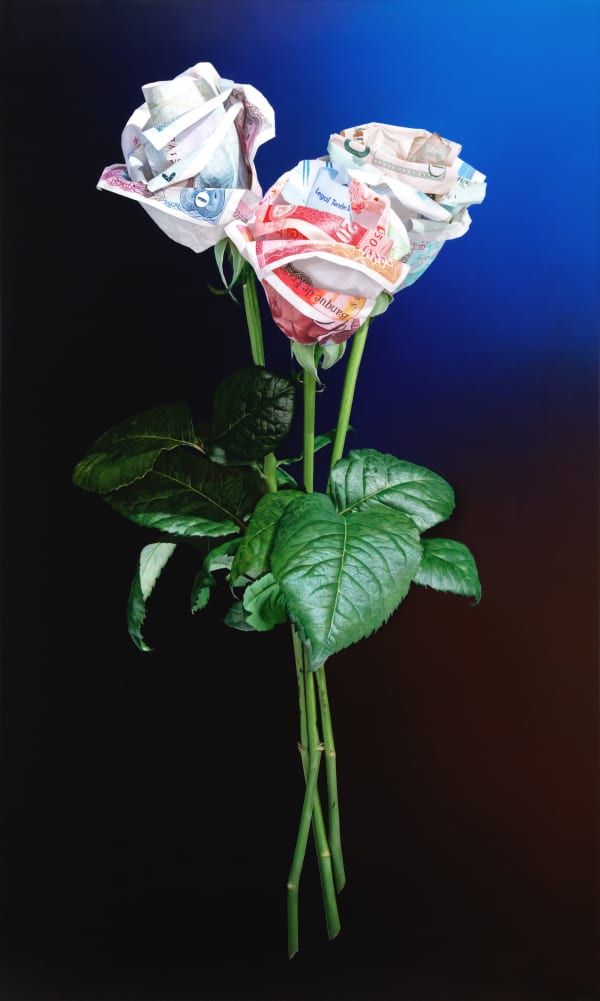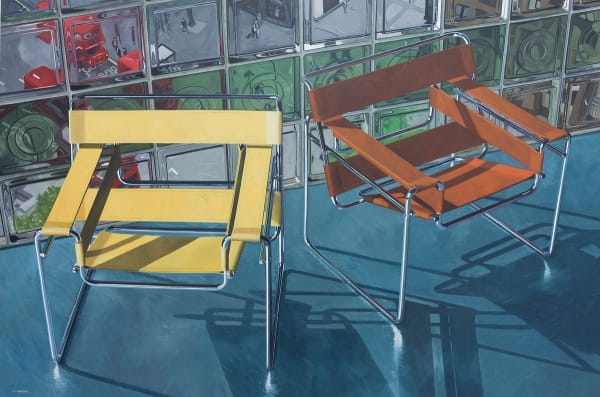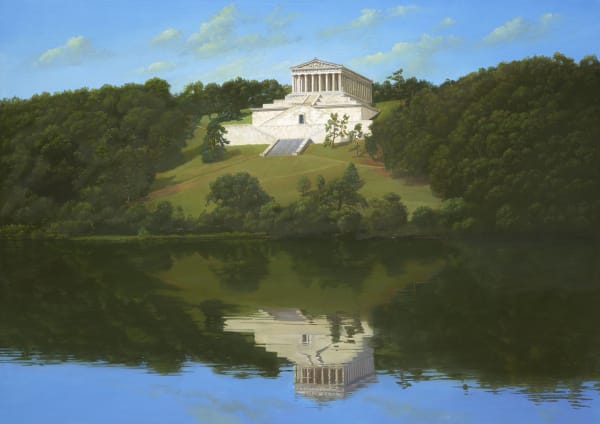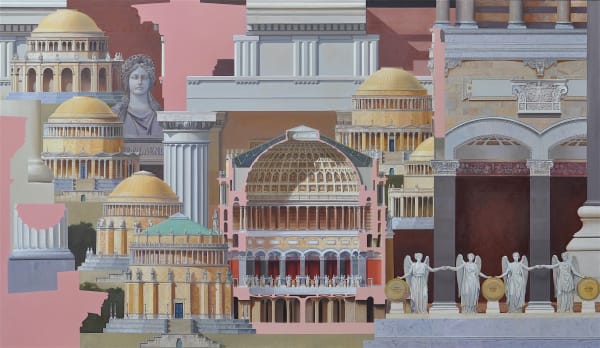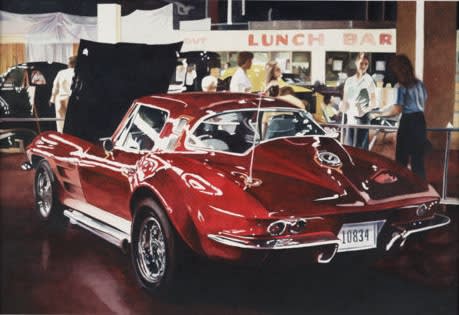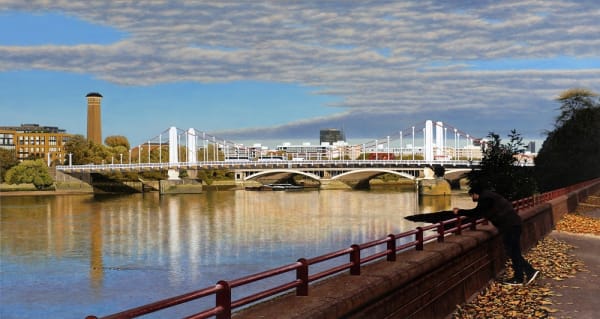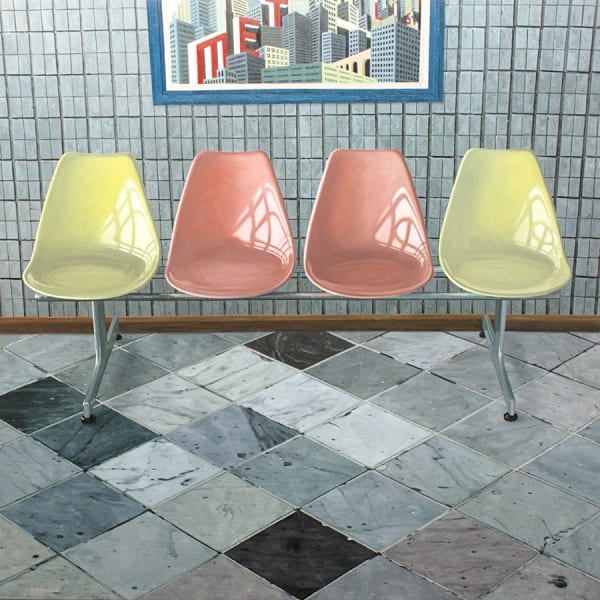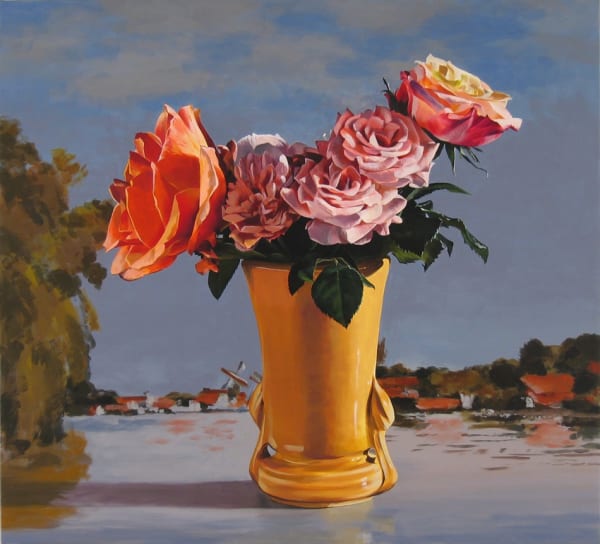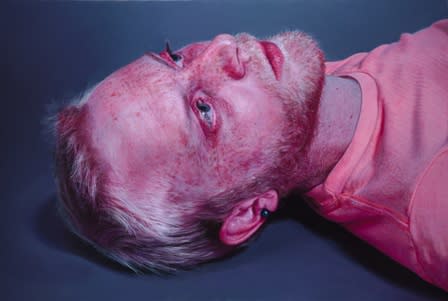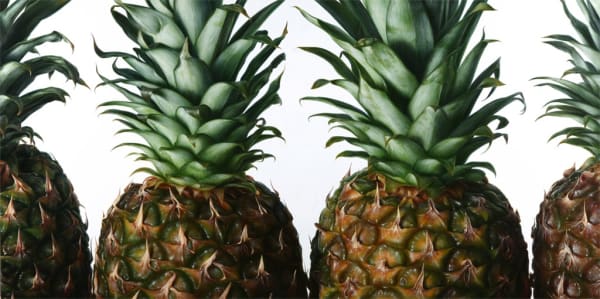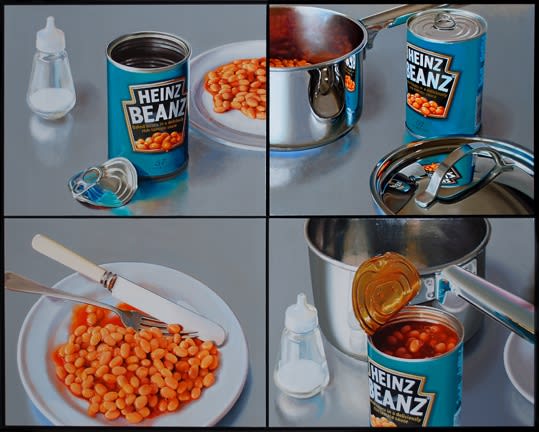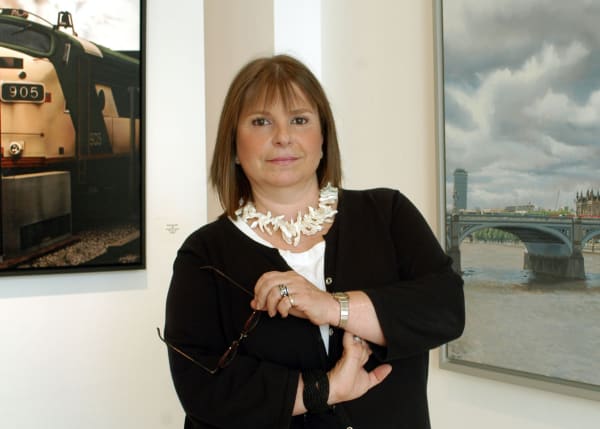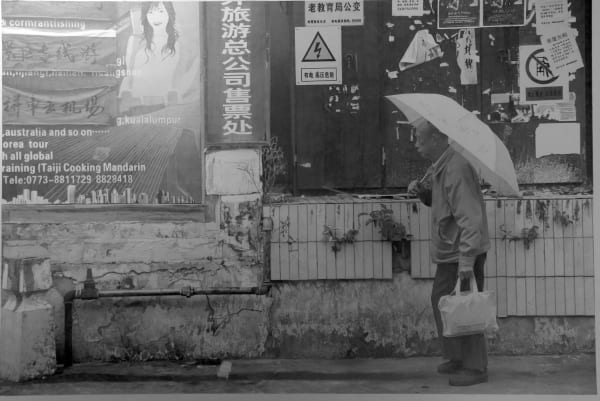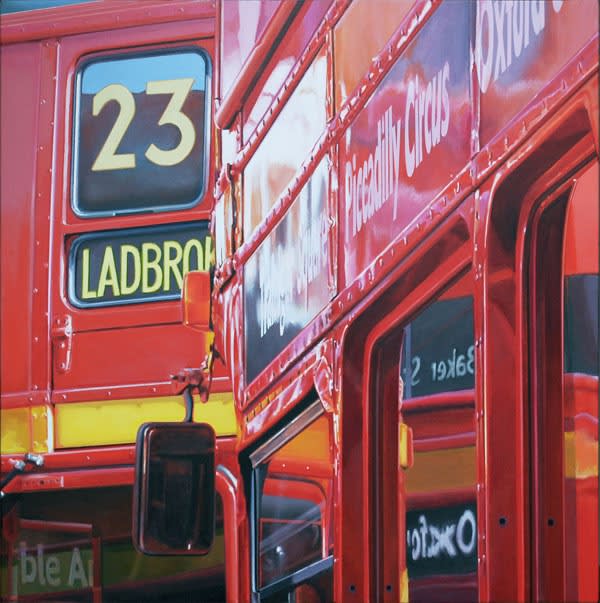Urban art is a form of street culture and artistic expression that relates to cities and city life. This is a broad definition and led to the one of the most well known evolutions of urban art we see today in street art and graffiti. Like graffiti artists, Hyperrealists are often influenced by their urban surroundings and look to evoke feelings of identity and sense of place within their work; though with very different results.
Urban Hyperrealism takes both grand forms of modernity and the more mundane, routine pieces of city life as its subject. Plus One Gallery’s London’s Calling exhibition of international artists from 2012 exemplified the various ways in which hyperrealism has captured the urban world.
Cities as intersections of life and culture

Cynthia Poole’s ‘Destinations’ features one of the most iconic London markers, the red double decker bus. Cities are where people from around the world live and work with one another. The ensuing notions of traffic, human and vehicular, are perfectly captured in this photo.
Poole’s subject of the two buses is both unique and common. With hints of locations such as Baker Street and Oxford Circus in the reflections on the buses, it is so distinctly London based, yet the street level view of traffic is one familiar to urban places in any city.
Other Hyperrealism artists in this collection also saw the meeting of people and vehicles as an intriguing and intrinsic part of urban life in the city. Francisco Rangel’s ‘Cyprus’ portrays two taxi cabs meeting in London, one of which has a Cyprus holiday advertisement upon it.
‘International’ by David Finnigan captures the warped image of the landmark London Eye through glass, in a seating area. Empty seats are waiting for their next occupiers while the Eye revolves with people in the background.
Hyperrealism offers breadth beyond sight and photography

In ‘London at Twelve’, Kike Meana shows the breadth of the city, highlighting famous landmarks with a singular vision that transcends sight and photography. Meana, like many visitors to London, is interested in the city landscape and the iconic buildings that form it.
Central to this piece is the Parliament building and the clocktower, yet in order to capture the sense of everything that is happening in London in one moment, viewers are shown the distance of the city and the Thames River with wide ranging scope.
By drawing on real world locations and a sense of varying perspectives, Meana is able to bring a rounded, larger view to his photorealistic oil on canvas creation.
The power of featuring multiple iconic buildings or places within a single painting is similarly seen in Harold Zabady’s ‘The River’.
Though Zabady’s composition also depicts a similar scene that features the Thames alongside edifices, it is an entirely different interpretation not least due to perspective.
Zabady’s Thames-level-viewpoint captures the slow moving river boats and lends them a unique significance: a slow pace offset against the busy city. Meana’s piece on the other hand seems to represent the Thames as an unspoilt, natural space in stark contrast to the manmade architecture.
Urban Hyperrealism takes many forms, even within the single collection of London’s Calling. By drawing not only on the unique perspectives of each artist, but the many large and small elements of a city, urban Hyperrealism highlights many different areas of real city life.
To book an appointment or for more information please contact us via email on maggie@plusonegallery.com and maria@plusonegallery.com
or by phone on 020 7730 7656.
or by phone on 020 7730 7656.
Related artists
Share
- Tumblr
Add a comment
-
-
 Blog entries
Blog entriesHyperrealism Today
Article on Hyperrealism written by Maggie Bollaert published on EF Magazine -
 Blog entries
Blog entries7 Questions for Plus One Gallery Founder Maggie Bollaert on Why She’s Heralding the Next Generation of Hyperrealist Artists - Artnet Article
The London-based gallery has championed contemporary figurative art since 2001 -
 Blog entries
Blog entriesArtist in Focus - Mike Francis
1938 - 2023 -
 Blog entries
Blog entriesJohannes Wessmark for American Art Collector
-
 Blog entries
Blog entriesMeet the Photorealists
-
 Blog entries
Blog entriesCarl Laubin - Homage to Le Corbusier’s Pessac
-
 Blog entries
Blog entriesArtist in Focus: Ben Johnson
-
 Blog entries
Blog entriesArtist in Focus: Paul Beliveau
-
 Blog entries
Blog entriesAlexandra Klimas in Landleven Magazine
Alexandra Klimas paints in tribute to the animal -
 Blog entries
Blog entriesHAPPY ANNIVERSARY PLUS ONE GALLERY
September 2001 - September 2021 -
 Blog entries
Blog entriesArtist in Focus: David T. Kessler
-
 Blog entries
Blog entriesArtist in Focus: Alexandra Klimas
-
 Blog entries
Blog entriesArtist in Focus: John Salt
-
 Blog entries
Blog entriesFeel Like We’re Living in Surreal Times?
Let These 5 Leading Hyperrealist Artists Ground You -
 Blog entries
Blog entriesAn Interview with Maggie Bollaert
For www.hyperrealism.net -
 Blog entries
Blog entriesArtist in Focus: Andres Castellanos
-
 Blog entries
Blog entriesThe Story Behind the Painting II: Alexandra Klimas
Hope the Donkey -
 Blog entries
Blog entriesCarl Laubin: Elegos
World Trade Centre – Ground Zero -
 Blog entries
Blog entriesArtist in Focus: Adolfo G. Bigioni
-
 Blog entries
Blog entriesThe Story Behind the Painting I: Denis Ryan
-
 Blog entries
Blog entriesArtist in Focus: Young-sung Kim
-
 Blog entries
Blog entriesHiperrealisme | 21 Jun - 30 Sept | Museu del Tabac, Andorra
-
 Blog entries
Blog entriesPlus One Gallery, The Piper Building
-
 Blog entries
Blog entriesPhotorealism of the 1960s
January 10, 2018 -
 Blog entries
Blog entriesThe Tradition of Still Life
November 29, 2017 -
 Blog entries
Blog entriesArtist in Focus: Javier Banegas
November 15, 2017 -
 Blog entries
Blog entriesArtist in Focus: Tom Betts
November 13, 2017 -
 Blog entries
Blog entriesYOUNG-SUNG KIM
October 18, 2017 -
 Blog entries
Blog entriesArtist in Focus: Paul Cadden
August 10, 2017 -
 Blog entries
Blog entriesArtist in Focus: Simon Harling
August 4, 2017 -
 Blog entries
Blog entriesArtist in Focus: Francois Chartier
July 10, 2017 -
 Blog entries
Blog entriesAn Interview with Christian Marsh
June 21, 2017 -
 Blog entries
Blog entriesArtist in Focus: Steve Whitehead
-
 Blog entries
Blog entriesAn Interview with Cynthia Poole
March 30, 2017 -
 Blog entries
Blog entriesAn Interview with Tom Martin
May 24, 2017 -
 Blog entries
Blog entriesArtist in Focus: Cynthina Poole
March 22, 2017 -
 Blog entries
Blog entriesArtist in Focus: Denis Ryan
-
 Blog entries
Blog entriesAn Interview with David Finnigan
-
 Blog entries
Blog entriesArtist in Focus: Simon Hennessey
-
 Blog entries
Blog entriesA Sentimental Journey
Carl Laubin's journey in the creation of his solo show -
 Blog entries
Blog entriesNew Destination on the Grand Tour
RIBA J article written by Hugh Pearman -
 Blog entries
Blog entriesAn Interview with Carl Laubin
November 30, 2016 -
 Blog entries
Blog entriesElena Molinari Interview
Exhibition 'The Alchemy of the Everyday' runs until 19th November November 2nd 2016 -
 Blog entries
Blog entriesReinterpreting the American Dream in Hyperrealism
October 5, 2016 -
 Blog entries
Blog entriesA Trip Down Memory Lane: Nostalgia in Hyperrealism
September 8, 2016 Plus One Gallery examines nostalgia and hyperrealism, looking at vintage iconography, items and period images rendered in hyperrealistic art. -
 Blog entries
Blog entriesArtist in Focus: Thomas Ostenberg
August 25, 2016 A closer look at the work of Thomas Ostenberg, whose sculptures explore the theme of motion and balance, reflecting his personal search for emotional equilibrium. -
 Blog entries
Blog entriesHow is Consumerist Culture Represented in Hyperrealism?
June 29, 2016 Built around imagery of recognisable brands, celebrity cults and everyday life, consumerist art is rooted in the present social context. -
 Blog entries
Blog entriesRelocation to Battersea Reach
June 23, 2016 -
 Blog entries
Blog entriesArtist in Focus: David Finnigan
June 22, 2016 British hyperrealist David Finnigan aims to present a style of realism that is both a progressive and experimental development of that genre. -
 Blog entries
Blog entriesSweet Temptation in Hyperrealism
June 9, 2016 Using a sensuous palette of colours and textures, many hyperrealist artists explore temptation, primal pleasures and how food can comfort the soul. -
 Blog entries
Blog entriesIn Full Bloom: Flowers and their Role in Hyperrealism
May 25, 2016 Hyperrealists are refreshing the still life genre, invigorating paintings of flowers with contemporary techniques that challenge notions of tradition. -
 Blog entries
Blog entriesArtist in Focus: Craig Wylie
May 20, 2016 Craig Wylie has developed a multi-faceted but singular approach to hyperrealism that seizes the appearance of his subjects with tremendous fluency and ease. -
 Blog entries
Blog entriesGallery News: We are relocating!
May 17, 2016 -
 Blog entries
Blog entriesWhy Painting Maintains a Significant Role in a World of Instant Images
May 11, 2016 In a world where high-tech photography and instant photo messaging is available at our fingertips, what does hyperrealism give us that photography cannot? -
 Blog entries
Blog entriesA Taste of your Five-a-Day in Hyperrealism
April 27, 2016 Many hyperrealists explore fruit as a representation the transient nature of life, using colour to remind us of the inevitability of mortality and change. -
 Blog entries
Blog entriesThe Influence of Pop Art in Hyperrealism
April 13, 2016 Hyperrealism is often considered an advancement of Pop Art and Photorealism and first came to prominence at the turn of the millennium. -
 Blog entries
Blog entriesGALLERY NEWS: We are relocating!
April 7, 2016 -
 Blog entries
Blog entriesThe Hyperrealist Travel Guide
March 28, 2016 Urban hyperrealism takes the modern metropolis as its subject. It challenges the artist to explore hidden meanings and diversity deeply rooted in society. -
 Blog entries
Blog entriesArtist in Focus: Cynthia Poole
Examining Consumerism with Nostalgia March 9, 2016 Cynthia Poole’s paintings take food packaging, sweet wrappers and chocolate bars as their subject matter; often with a warm nostalgia for the 1980s confectionery. -
 Blog entries
Blog entriesIs There a Place for Artistic Interpretation in Hyperrealistic Art?
January 12, 2016 -
 Blog entries
Blog entriesHow Does the Use of Photoshop Affect Hyperrealistic Art?
December 16, 2015 -
 Blog entries
Blog entriesThe difference between Photorealism and Hyperrealism
November 25, 2015 -
 Blog entries
Blog entriesCities in Real Life: Urban Hyperrealism
Plus One Gallery examines the impact of street culture, through urban art, and its effect on artistic expression within hyper realism pieces. -
 Blog entries
Blog entriesA Brief History of Hyperrealism
August 7, 2015 Plus One Gallery recaps Hyperrealism with a brief look at the historical influences and movements that led to modern day hyper realistic art.
-






